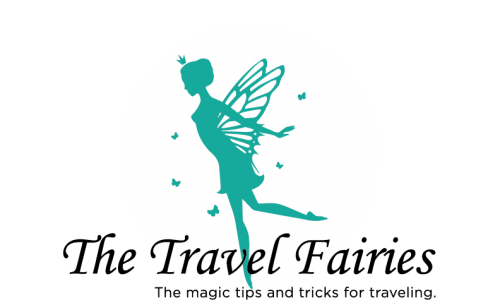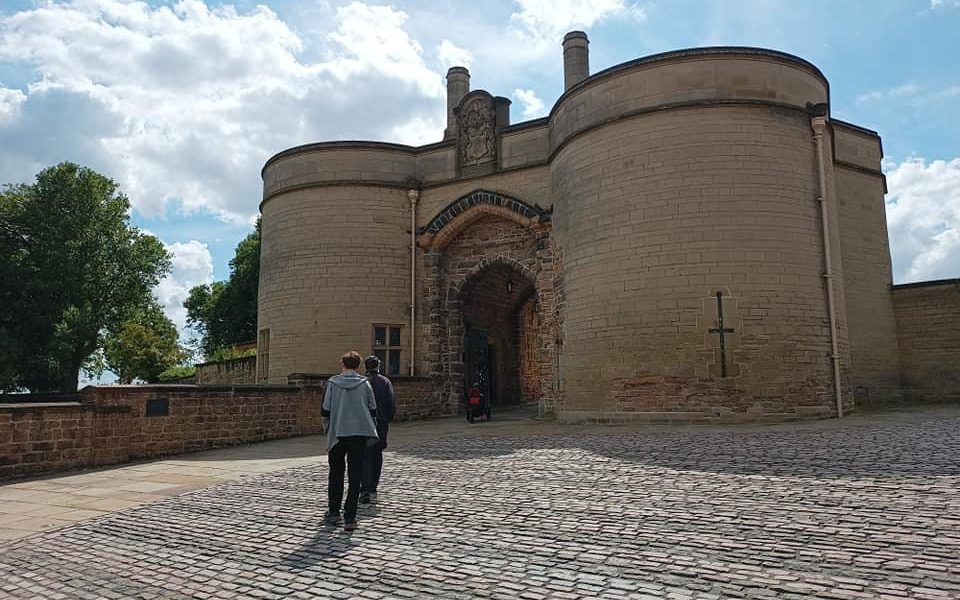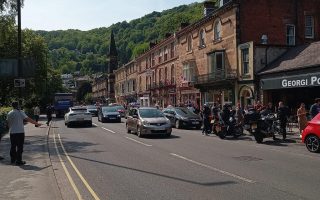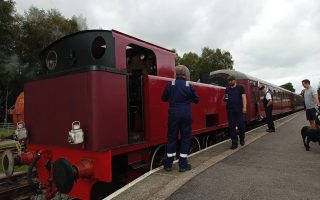We decided to take a visit over the school holidays to Nottingham Castle and have a wander around the city while we were there. It’s not much more than an hour or so away and a castle we’ve never visited. Tickets were reserved online and off we went.
Nottingham Castle isn’t really a castle. It was once, but other than the magnific gatehouse, which is the entrance, you’d struggle to recognise it as a castle.

The origin of the castle dates back to 1068, two years after the battle of Hastings. The original wooden motte and bailey castle was soon turned into a stone building and continued to be extended into medieval times. It has a strong link to the legend of Robin Hood. During the crusades it was occupied by the supporters of Prince John and the final showdown between the outlaw and the Sheriff of Nottingham was reputed to take place there. King Richard besieged the castle on his return and the occupants surrendered in days.
It was also the site of the resolution of another family squabble. King Edward II was murdered by his wife and her lover, Rodger Mortimer. His son, Edward III staged a coup at Nottingham Castle just before his 18th birthday. Mortimer was hanged weeks later, Isabella of France lived exiled from the court at Castle Rising in Norfolk.
The castle continued to be a royal residence until the civil war, although it’s upkeep was not maintained and it was already rapidly turning into a ruin. There were a few civil war skirmishes there. At the start of the civil war, Charles I chose Nottingham Castle as his rallying point, but after he left, it wasn’t long before the parliamentarians occupied the site. A couple of years after Charles I was executed, the castle was demolished.
When Charles II came to the throne, the first Duke of Newcastle began to build a mansion on the site, which his son, the second Duke completed. The mansion didn’t even survive 200 years. During the 1831 riots the revolting peasants burned it down in protest against the fourth Duke and his opposition to the reform bill.
In 1875, restoration of the castle began and a few years later, it was opened by the then Prince of Wales as Nottingham Castle Museum, the first municipal art gallery in England outside of London.
With a history like that, it seemed like an ideal trip for a day out over the summer school holidays. Even better, or so I thought, the admission price allows for return visits for a year.
There were a few things that I hadn’t accounted for. Driving into Nottingham. It’s horrible. No city is fun to drive around, but Nottingham must be among the worst, even out in the suburbs. Then there was the small matter of parking. We were parking with a blue badge, so found a postcode for the nearest blue badge parking to the castle . That’s when things got confusing. The satnav took us down a bus route, but it was clearly marked as permitted for blue badges. Image my horror to receive a penalty notice. Much stress, images captured from street view and an appeal went in. Which was upheld. We were in the right, but drivers using the blue badge parking are automatically issued a fine and only then is the registration number added to the permitted list. It’s a strange system and very stressful.
The castle wasn’t signposted from where we parked, so we had to navigate using a phone. We approached the gatehouse and thought we were entering the sort of castle we’re used to. But that’s all you get. The mansion is an impressive building as a stately home, but really not what I was expecting. I knew that the main building was a mansion, but expected some trace of the castle beyond the gates.
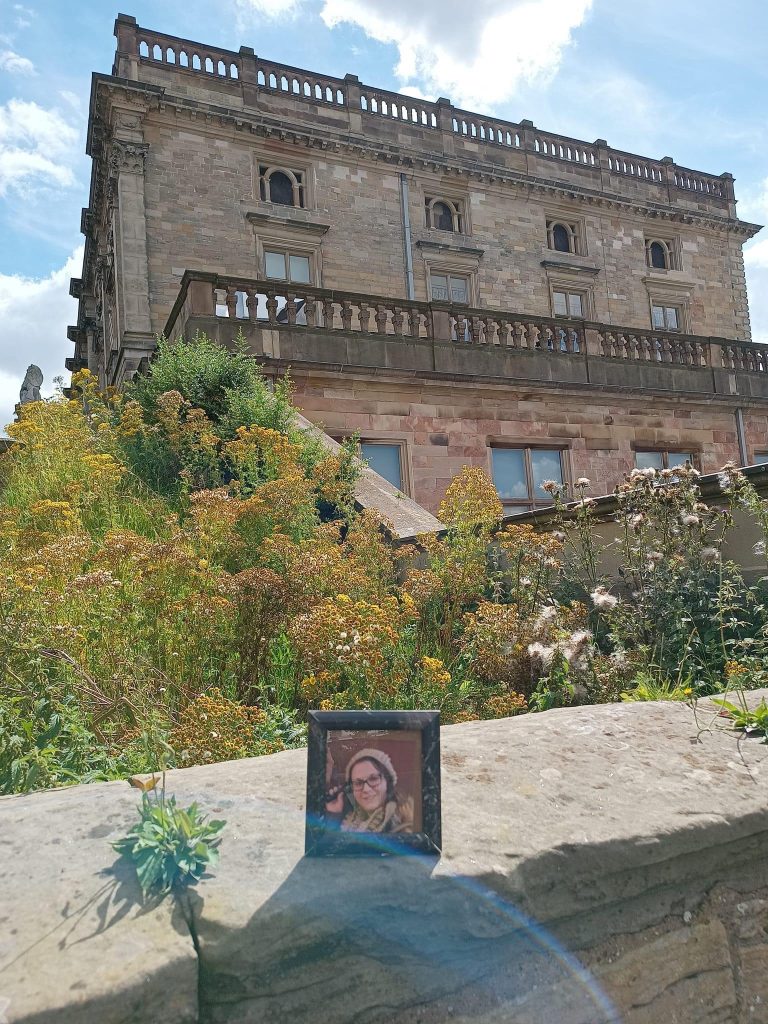
I’ve been to many museums. For the price of admission, this one is very disappointing. The first room we went to was mostly poster displays. Up a level and it was more of an art gallery, a fair amount of it modern art. It wasn’t inspiring. A small number of artefacts and a section dedicated to the history of lace making, which is what Nottingham was famous for during the industrial revolution. Much of this was clothing made of, or decorated with, lace.
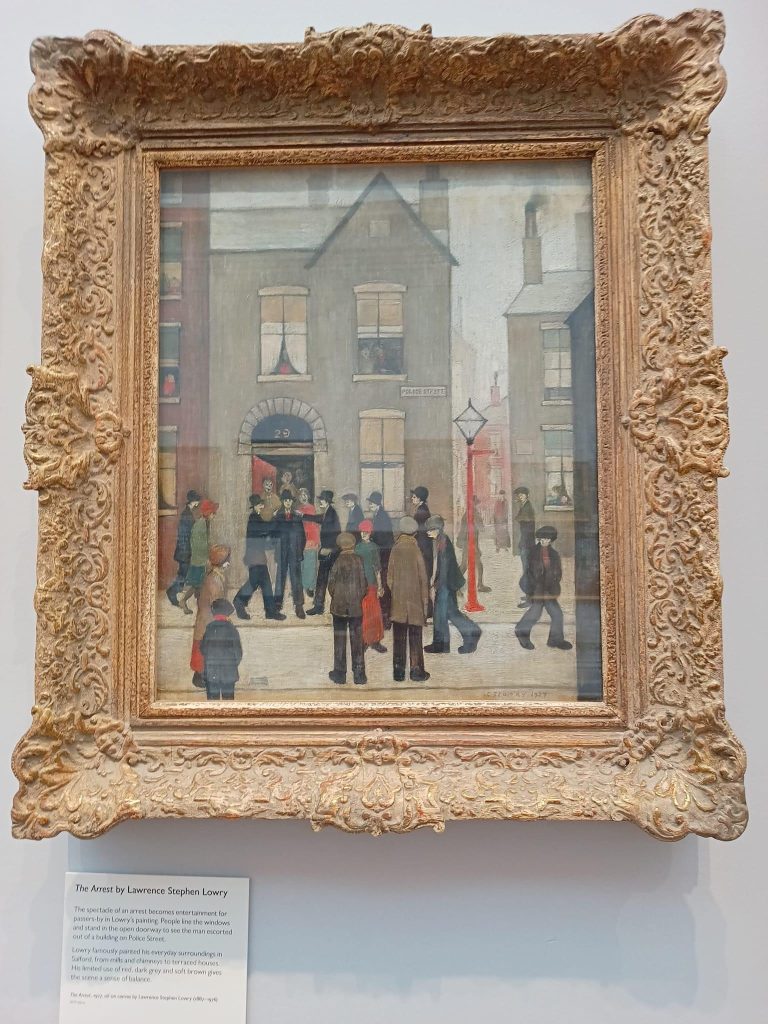
Below all of this was an interactive section themed on Robin Hood. A few screens offering Wii-like activities (not all of which were working), plus a few films. Might appeal to very young children, but had nothing to interest us or a 15 year old.
The views from the walls are quite impressive. Which is probably the best part of a disappointing visit. The grounds are tidy, but no beautiful gardens usually associated with a mansion. We may have admission for a year, but I don’t think I’d use it even if I happened to be in Nottingham.
Although its name is of Anglo-Saxon origin, it was settled long before that. I can’t help but wonder what the proud inhabitants would make of the original name of Snottingham, after the Saxon chieftain, Snot, who ruled there. Their settlement was situated where the lace market area is now.
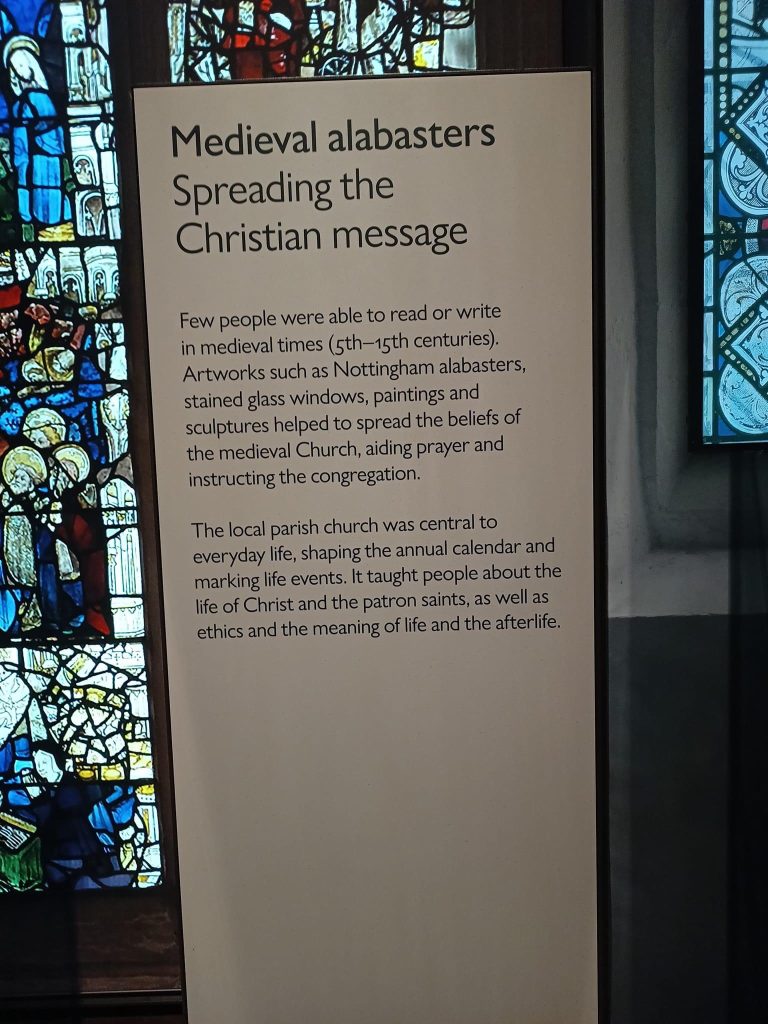
We decided to explore the city as we were there. Believe it or not, Nottingham is one of the most visited cities outside London. It isn’t difficult to see why. It’s a lovely city. But it’s very busy. The city is probably most famous because of the legend of Robin Hood, but it is also important in the history of the tobacco industry, bicycle industry and was the heart of the lace making industry. Many years before it had established itself as a leading producer of religious alabaster figures.
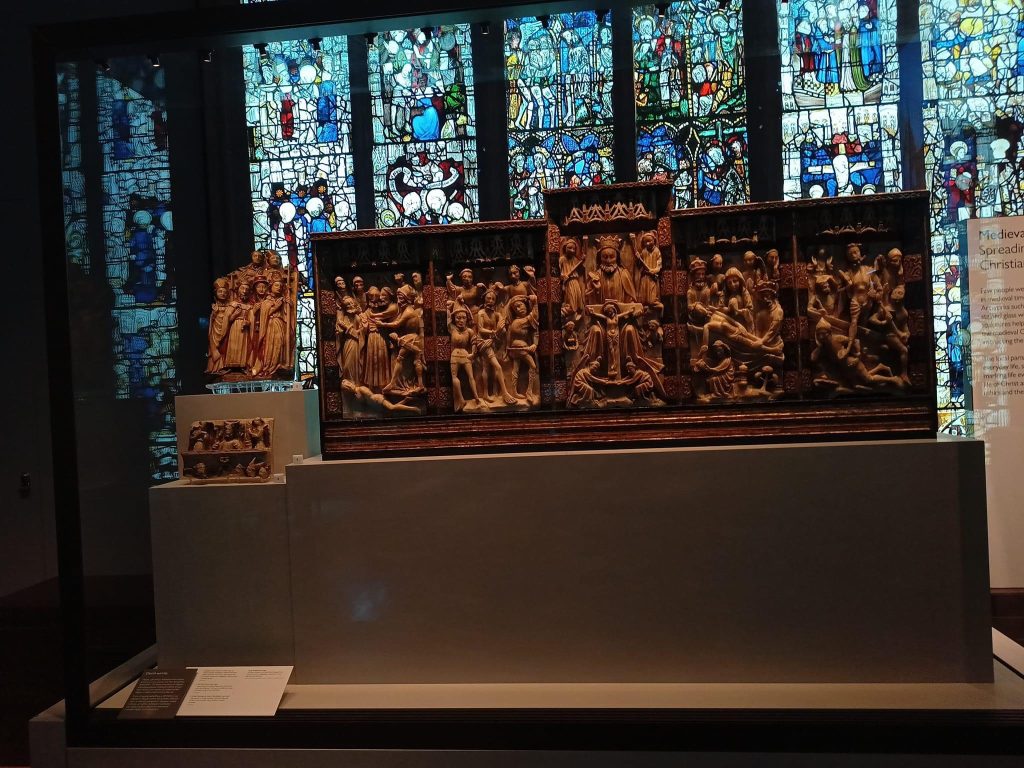
The current town is a mixture of eras and very lovely. For a city, it’s very clean. We had a wander around and decided to call in to the Nottingham Contemporary for a little culture. It’s free to enter, but, to be honest, you’d have to pay me to go back. It’s modern contemporary “art”. I was left cold. Nice cafe though.
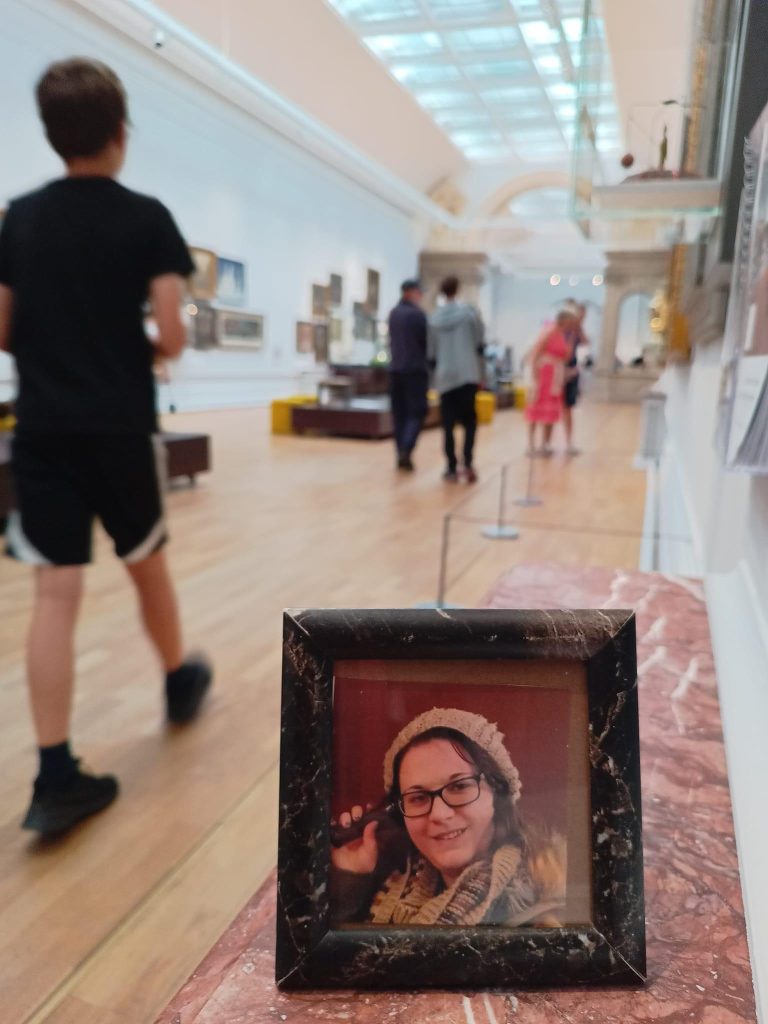
Leaving was just as much hell as arriving in Nottingham. By golly, I was glad to get onto the M1 and it’s not often I say that.
So, to sum it up, Nottingham Castle was a disappointment. I have a year’s free entry to the museum, which I can confidently say I won’t be using. After several weeks I finally wiped a fine for a traffic offence that wasn’t. The experience of Nottingham Contemporary, which I won’t forget, but not for the right reasons. Fortunately the city was quite lovely and almost made up for it. If I ever return, I may choose public transport though.
